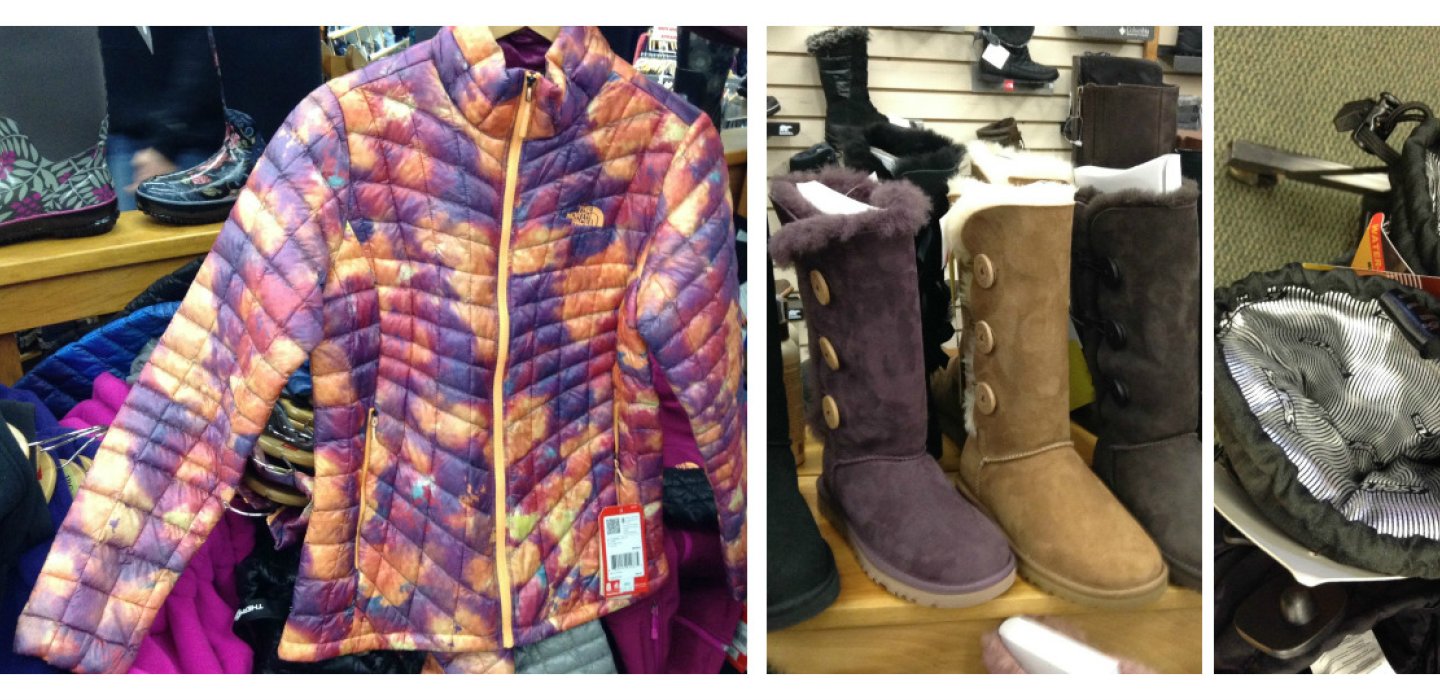
When temperatures drop, Adirondackers layer up. "Layering" is a time honored technique which traps air close to the body, where it can be kept warm... which keeps us warm. When we know how to dress for the weather, the weather itself is not so intimidating.
I went to International Border Company, a wonderful outdoor store, to help me explore all the possibilities. I brought along my Layering Consultant. She's an expert in Adirondack weather, and how to dress for it.
the core
Our torso generates our heat, and keeping that heat working for us is an important first step in constructing our best winter looks. Below, my consultant illustrates our base layer, which is a warm shirt. She feels buttons add unnecessary bulk, so a zipper, or a pullover, will present a more seamless profile, for better heat retention. I favor turtlenecks, but if we find them uncomfortable, there are many variations, as seen here, with a modified higher neck
Also, the thumb notch keeps the coverage going all the way past our wrist, while also keeping the long sleeves from getting bunched up inside our parka.

As seen below, a variation of base layer, vest, and then a jacket or parka are three essential pieces which will meet any temperature and keep us cozy. Vests are a fantastic addition to our wardrobe because they keep that core warm, but also don't restrict our arm movements.
Anyone whose mother sent them out to play dressed in a way that made play impossible knows what I mean.
We also have the advantages of lighter, and thinner, fabrics which provide the same protection as those bulky older garments. The jacket below is thinner than many sweaters I own, yet is wind-proof and full of insulation.

We can layer with a thin shirt, a sweater, and a vest if it is not windy. Likewise, we might skip the base layer if we are wearing a special occasion sweater, and will be taking off our parka when we get to our fun indoors destination.
We can also choose a piece with built-in layering. The coat (below, on the far left) is highly insulanted, yet thin, and as light as a feather. The jacket shirt (upper right) has a classic fleece lining, with many tiny pockets to keep in warmth. The latest version of this is seen in the silvery lining (bottom right) which is designed to reflect heat back on the wearer. My Layering Consultant does not have one yet, but has heard great things from those who do.

The temperature, the wind, and the sun all combine to shape our wardrobe for the task ahead. I've gone out into single digits with my coat open and my sunglasses on, because it's not windy and the sun is bouncing off the snow.
our precious head
It used to be an accepted statement that there was a lot of heat lost from our heads. Then, the study that supported such thinking was retested and it turns out heat-loss was not as measurably large as previously thought. Science, marching on.
But, it doesn't matter. Because if we don't wear a hat, it feels like we are losing a lot of heat!
While our head is only 10% of our surface area, it has a lot more of our circulation running through it; which brings with it opportunities for heat loss. This is ramped up all the more when the rest of our body is being protected from heat loss. We can bundle up in a nice warm coat and still be uncomfortable if our head is not covered.
I have many hats for different occasions. Some, like the one (far left) with the ear flaps, are great for days that are chilly and windy. Some, like the pretty hand-knitted hats (top right,) are good for low-temperature, but sunny, days. Wind resistance will always require a tighter weave, and perhaps some kind of nylon finish.

The low profile knit hats (bottom right) are perfect for wearing under a parka hood. If we are participating in certain activities, from ice fishing to ski races, we will notice there is one drawback to wearing a parka. When we turn our head, the parka hood does not turn. And instead of checking on our pop-up flag or how much the competition is gaining, we will be looking at the inside of our hood. Which does not offer much information.
Hat hair? Well, it may be inevitable but it's also easily fixable. Get one of those little combs or folding brushes to make repairs once we are indoors again. Let's be honest; we aren't making a great impression with our face screwed into our coat collar and our hands over our ears, are we?
pamper the extremities
Hands and feet are a special challenge. They are perhaps the most difficult to protect because we can't just bundle them up. We are also using them.
Fortunately, there are many specialty items that are designed to help us take care of these most vulnerable items. Our hands and feet are the smallest in size, and thus, the first to lose heat in cold weather. This is where advances in insulation technology gives us the right combination of warmth and dexterity.

Our feet really need some attention, because they are down there in contact with the ground. We can't layer our foot coverings the way we do our torso, but we can go for the best insulation we can. As seen above, we don't have to settle for black. There are many stylish, and sensible, options.
Good boots are a must. This not only gives us warmth for our feet, it gives us a good grip on different surfaces we are likely to encounter during the winter. Smooth soles and slick surfaces are a bad combination, and shoes that are not designed for the cold weather will make our feet uncomfortable much more quickly than proper footwear.

Socks should work with our boots to maximize our comfort. Always try on new boots with the proper socks, so we have plenty of toe room. My fall boots are snugger because I'll be wearing slimmer socks. My winter boots have room for my thickest pairs.
What to wear on our hands is a highly personal choice, depending on what we will be doing, and how long we're going to be doing it. I have some of those gloves with the touch-screen-compatible tips, so I can take pictures with comfort, (works much better than using my nose!) but this style is not good for tasks where I would be out in a seriously chilly wind.

Long-term warmth is always going to be about the mittens. As seen above, there are convertible styles (far left) where we have the comfort of a mitten with the option of dexterity. Either of the styles on the right are bulky enough to lend themselves to being worn with a glove layer underneath. Best of both worlds!
last but not least, legs
Legs just might be the trickiest parts of all. They are called upon to do a lot of activity, and yet they are often the lightest covered.
Thin layers are best, since bulk would prevent what legs are called upon to do. As seen below, the most popular option for many is still the classic wool pants (far left.) This is a style known as Adirondack Plaid, and many think it was developed right here in Malone. We can wear some long underwear beneath. I adore silk, as it's both light and warm, but modern wicking fabrics (bottom, right) are also a good choice.

My layering consultant found some insulated pants on sale (top, right) and was drawn by the Sale tag, then hastened to the changing room when she found the inner layer was the space age reflective fabric we'd admired earlier. They had her size and she liked the fit.
I love it when an outfit comes together.
Explore that next outdoor adventure. Fuel up before or after with some great dining. Choose the right lodging.
In related Stylin' ADK news:
Snowmobilers: Faithful fashionistas
Close-up: Wearing it the Whiteface way

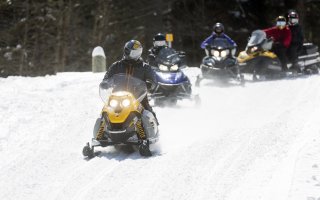
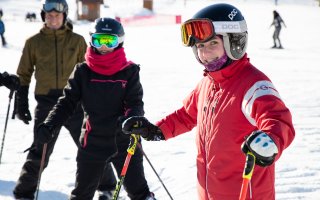
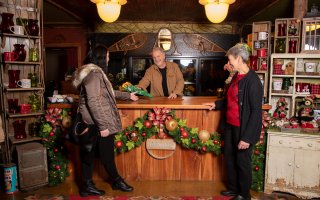

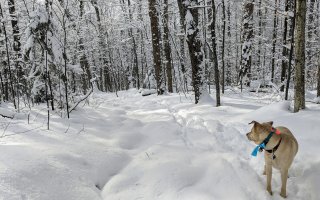
Comments
Add new comment